|
Recently I wrote an article on how Wacom's 6D Art pen and the Intuos3 digitizing tablet worked with Corel Painter IX. If you are not familiar with the Intuos3 tablet, you can see the review to familiarize yourself with how it works. The 6D Art pen also works with the Cintiq 21UX tablet which I didn't have available to test. Below is a picture of the Cintiq. The Cintiq is a very revolutionary combination of monitor and digitizing tablet. I first used one at Siggraph 2002 and was tremendously impressed.
One writes on a graphic tablet with an electronic stylus type instrument to create lines that appear on the monitor screen. The Cintiq is an exception. The pressure input or tilt of the stylus causes changes in the output. The 6D Art pen works on the principle of rotation while still being able to be pressure sensitive. The nib of the Art pen is beveled and the stroke when used with an appropriate program changes as the pen is rotated. The 6 positions are:
The Interface of the Intuos3 is sensitive to the type of pen used and will change accordingly. Notice how the Art pen is marqueed.
Adobe Photoshop CS2 and Illustrator CS2 have been engineered to also work with the Intuos3 Tablet, the Cintiq 21UX, and the 6D Art pen. In brief, in Illustrator CS2, the Art pen works in conjunction with the Calligraphic and Scatter brushes and in Photoshop CS2, it can be used to control size, opacity, angle, flow, color dynamics, and the amount of scattering with any brush. Some brushes work better than others in both programs and experimentation is the key. The following are some examples of the strokes in Illustrator CS2 with the corresponding settings. The nibs are beveled and the pen was held first with the nib lengthwise and then with the nib crosswise.
Deciding where to place the option for rotation required experimentation. As with art, there was no one way. The following were some of the settings I used. However, I could have easily chosen other settings instead.
And the setting for the 3D Geometrics was as follows.
There are many Calligraphic and Scatter brushes in Illustrator CS2 and with modifications the amount is almost limitless. In Photoshop CS2, the 6D Art pen can apply to any brush and to most of the settings so the choice is even more wide open. I am including just a few as examples here.
Once again, the following show the settings I chose; again, I could have chosen others.
The 6D Art Pen in conjunction with the Intuos3 or the Cintiq 21UX digitizing tablets can extend the artist's tool box of brushes. This is especially true since it integrates with major graphic programs. Other programs can also be used with the 6D Art pen. See the Wacom site for more information. The pen retails for $69.95 and can be purchased at the Wacom Store. I always like to welcome readers to my website. Â 
|
Paula Sanders Report � Wacom's 6D Art Pen - Part II
Jun 03, 2005 at 12:00 am by deemarie
Sections:
Archives
Privacy Notice
This site uses cookies to deliver the best experience. Our own cookies make user accounts and other features possible. Third-party cookies are used to display relevant ads and to analyze how Renderosity is used. By using our site, you acknowledge that you have read and understood our Terms of Service, including our Cookie Policy and our Privacy Policy.

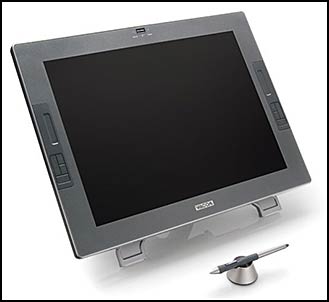
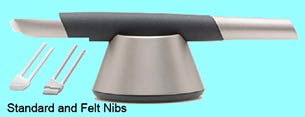
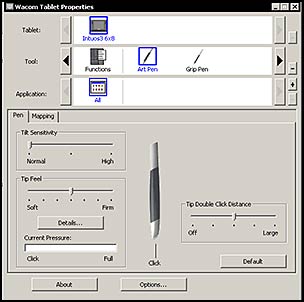
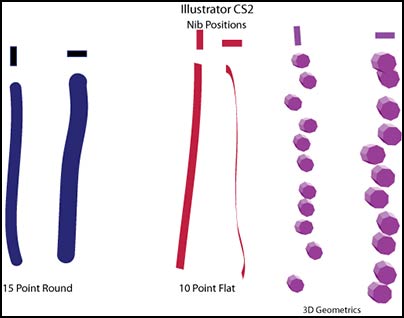
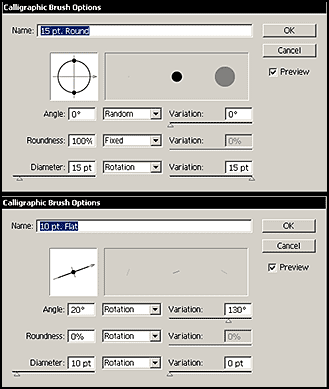
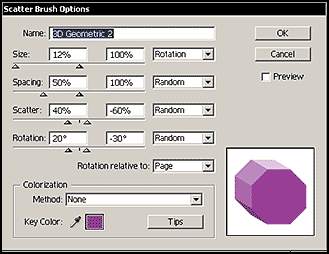
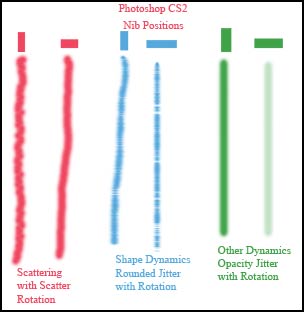
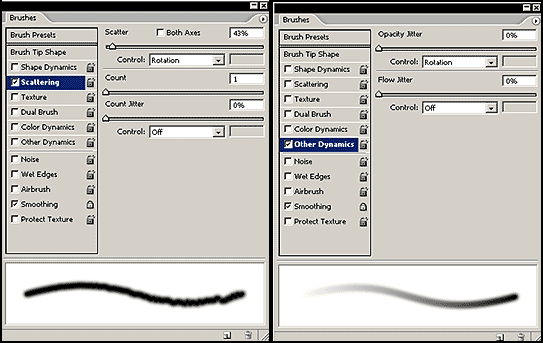
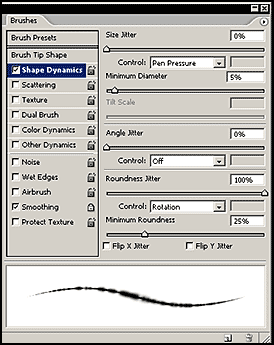




Comments